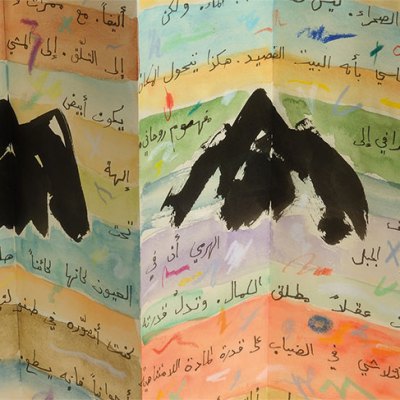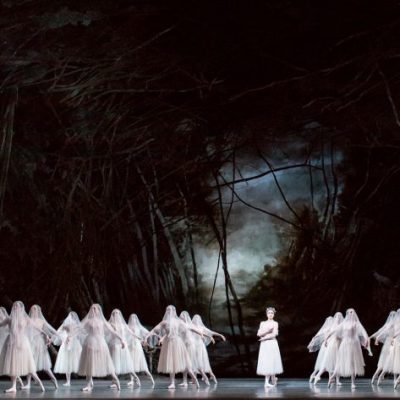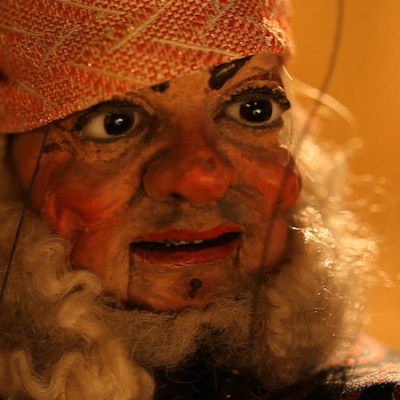Huguette Caland was born in Beirut in 1931. From a young age she grappled both with expectations about how Lebanese women were meant to look and behave as well as the way her family’s public standing intruded into her personal affairs. Her mother, Laure El Khoury, came from a prominent family of bankers while her father, Bechara El Khoury, a Maronite Christian from Mount Lebanon, held the post of prime minister twice before becoming the first president of the Lebanese republic in 1943. It was only in her thirties – having studied law, married and had children – that she really began to forge her own path. In 1964, her father died. The same year, Caland enrolled as an art student at the American University of Beirut.
Cancer/Soleil rouge (1964) was the first painting she completed, shortly after her father’s death from the illness. It is with this work that Caland’s first UK retrospective, at Tate St Ives, opens. Feathery strokes of intense red radiate from the centre, and while thinly applied oil paint almost bares the linen canvas in parts, elsewhere it’s a thick slick. Like the afterimage pasted inside the lids of closed eyes after staring too long at the sun, the painting records the influence her father played in her life and the burning impression his absence left. Yet its intensity also provides evidence Caland’s own artistic power and promise. In the catalogue for her first solo show at Dar al-Fan in Beirut in 1970, the painting is titled Cancer ou point de depart. El Khoury’s end was, for Caland, a new beginning – it was while hanging the exhibition she decided to leave Lebanon. Within five days of telling her family, she was in Paris.
Tendresse (1975), Huguette Caland. Courtesy Huguette Caland
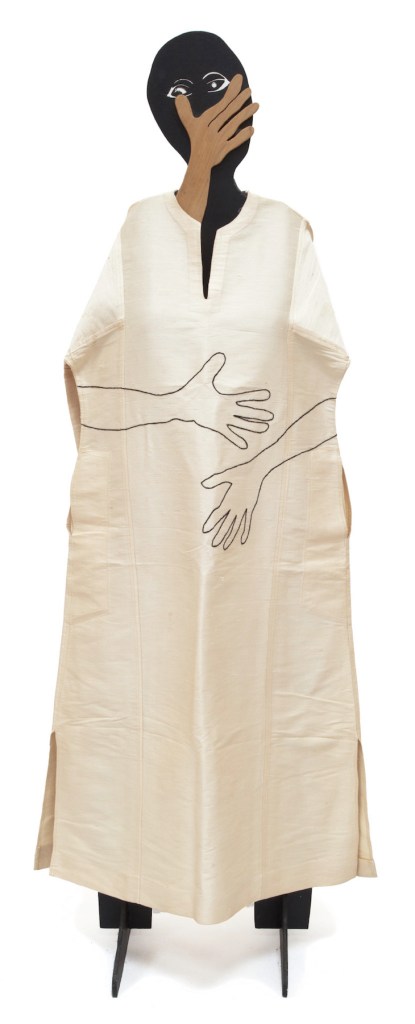
‘I didn’t leave for my art,’ Caland later explained, ‘because you can do art wherever you are. I left because I wanted a career.’ Despite living in Paris for 17 years and even designing a line of mischievous, boldly embroidered kaftans for Pierre Cardin (two are on display at the Tate’s show), she was never quite embraced by the French artistic scene – though the move was clearly necessary at a deeper, personal level. ‘I wanted to have my own identity. In Lebanon I was the daughter of, wife of, mother of, sister of. It was such a freedom, to wake up all by myself in Paris. I needed to stretch.’
Mustafa acrobate (1971), Huguette Caland. Courtesy Huguette Caland
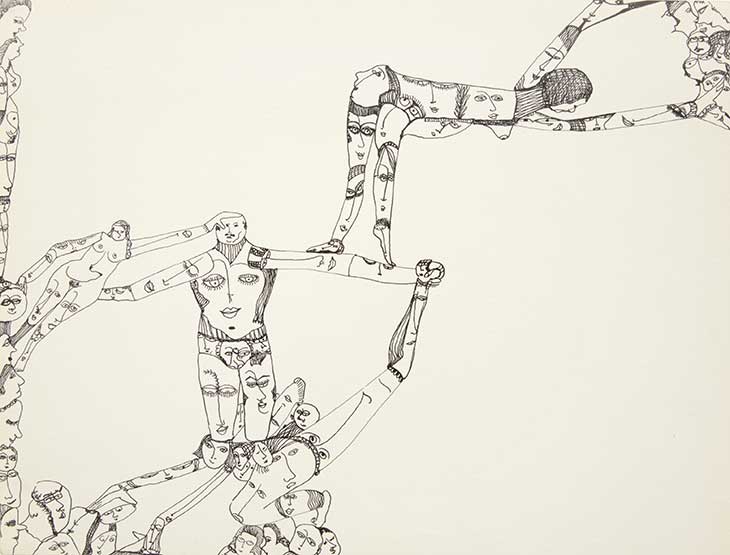
Yet for an artist who consistently sought freedom, independence and self-determination, Caland’s works most often figure relations – romantic and sexual, friendly and filial – between people. At the Tate, groups of gorgeous line drawings on display include Hi! (1973), in which an exuberantly naked semi-seated figure greets an unseen visitor, arms and legs akimbo. Untitled (1972) is a vertical vortex of profile outlines stacked up on top of each other as if mapping how conversations or affectionate relationships pass along chains of individuals. Baiser volé (1971) depicts a man sucking a woman’s nose, her eyes closed in contentment while from the back of her head billows another face – her mind, perhaps, elsewhere. In Tas (1973), Tender (1973), and Mustafa acrobate (1971), naked figures are patchworks of others’ faces, bedecked with eyes, noses, lips and hair – as if individuals might only attain a place and body within the world through interaction with other people.
In the larger, painted works, Caland zooms in on bodies. Against the subtly gradated red background of one canvas in her series Bribes de Corps (1973), two bulbous orange alveoli press up against each other. Individually shaded curves distinguish one from the other while a sliver of white pushes them partially apart. In Nous Deux (1972), the slender gap between two finger-like protuberances reaching out to each other across a void is electric with the possibility of touch. And the diminutive crevice at the bottom of a pink canvas titled Self-Portrait (Bribes de corps) (1973) flirts with the suggestive notion that the outside world might be let into the frame through the bottom.
Bribes de corps (1973), Huguette Caland. Courtesy Huguette Caland
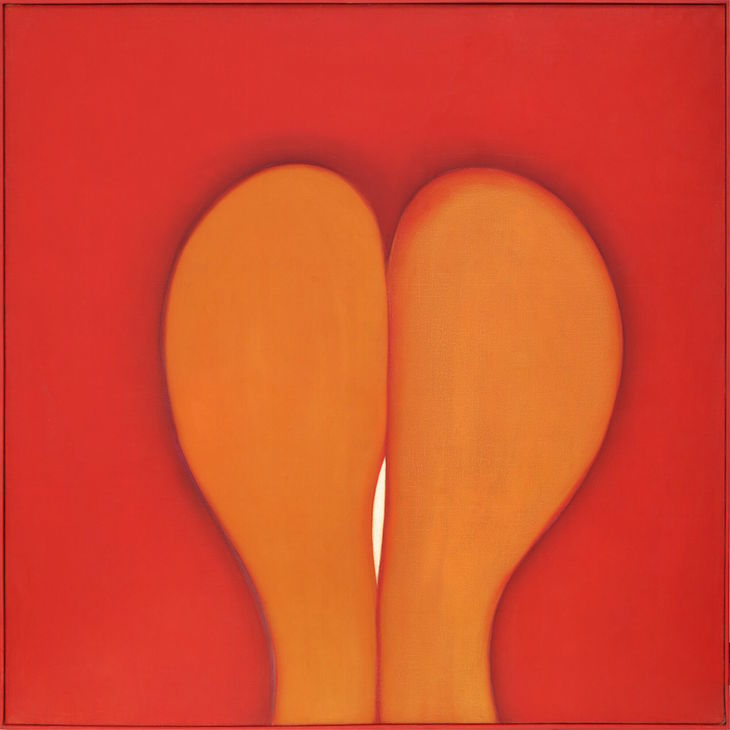
Orifices, skin and other points of contact: all places where boundaries pleasurably fall away. Equally, however, they serve as reminders of the impossibility of full dissolution. Apostu, painted after the death in 1986 of Caland’s lover, the Romanian sculptor George Apostu, depicts three rounded monochrome shapes snugly ensconced within each other. But after the candy palette of her other works, the pale grey hand – which may be supporting another’s back or else hiding a grieving face – counterbalances comfort with bleak mourning and loss. The following year Caland again relocated, this time to California, where she stayed until 2013, when news of her first husband’s declining health brought her back to Beirut. A certain susceptibility to people appears to have brought Caland full circle. But now, 43 years after leaving, she returned on her own terms.
Footage taken in 2009, in her Los Angeles studio-home, captures Caland in a thoughtful vein. She works at a low table. Behind her, large windows look out on to a garden filled with plants and sunlight. Her clothes are simple: a plain white cotton kaftan with a plastic zip and large, dark-rimmed glasses secured with a loop of black cord perched high on the bridge of her nose. As she looks down, away from the camera, a quiet smile hovers around her lips and eyes. ‘The line is beautiful,’ she says, a sense of wonder suffusing her voice. ‘I’m a line person,’ she continues, her tone that of someone declaring something to themselves. ‘I love…’. She trails off.
‘Huguette Caland’ is at Tate St Ives until 1 September.

